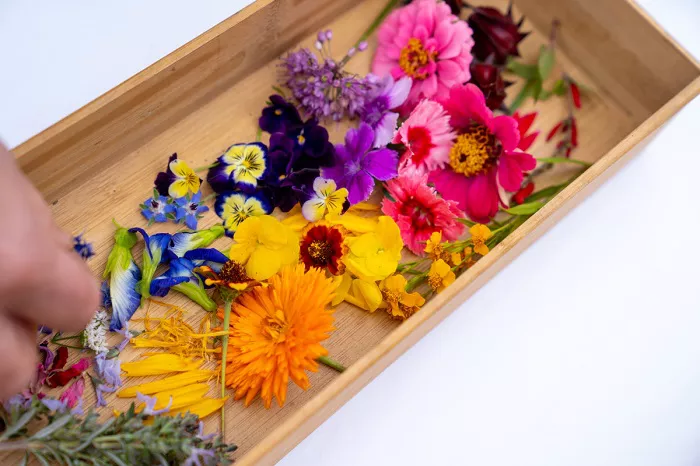Australia’s diverse landscapes are home to a vibrant array of edible flowers. From the lush rainforests to the arid deserts, these blooms offer not only visual beauty but also a unique culinary experience. Whether you’re a seasoned forager or a curious gardener, exploring edible flowers can add a touch of nature’s magic to your plate. This article delves into the world of edible flowers in Australia, highlighting their varieties, uses, and the joy they bring to both the kitchen and the garden.
A World of Edible Blooms
Discovering the Edible Flora
Australia’s native flora is rich with edible flowers that have been used by Indigenous Australians for thousands of years. These flowers are not only nutritious but also add a burst of flavor and color to dishes. Modern gardeners and chefs have rediscovered their potential, incorporating them into salads, desserts, and even cocktails. The key to enjoying edible flowers lies in knowing which ones are safe to eat and how to use them creatively.
Safety First: Identifying Edible Flowers
Before diving into the world of edible flowers, it’s crucial to identify them correctly. Not all flowers are safe for consumption, and some can even be toxic. Always ensure that the flowers you plan to eat are grown organically, without pesticides or chemicals. If you’re foraging, avoid picking flowers from areas with high pollution or near busy roads. When in doubt, consult a reliable guide or an expert to confirm the flower’s edibility.
Native Edible Flowers
Australia’s native flowers are a treasure trove of edible delights. The Native Violet (Viola hederacea) is a common sight in many gardens and is safe to eat. Its delicate purple flowers add a sweet, mild flavor to salads or can be candied for a decorative touch. Another notable native is the Warrigal Greens (Tetragonia tetragonioides), which produces small yellow flowers that can be eaten raw or cooked. These flowers have a tangy, spinach-like taste and are rich in vitamins.
Cultivated Edible Flowers
In addition to native species, many cultivated flowers are also edible and can be grown in home gardens. Marigolds (Tagetes spp.) are not only beautiful but also versatile in the kitchen. Their petals have a slightly bitter taste and can be used to add a peppery flavor to soups or salads. Nasturtiums (Tropaeolum majus) are another popular choice, with their vibrant orange and yellow flowers adding a spicy kick to dishes. Their leaves are also edible and can be used as a garnish.
Flowers for Flavor and Nutrition
Edible flowers are not just about taste; they also offer nutritional benefits. Many flowers are rich in vitamins, minerals, and antioxidants. For example, Calendula (Calendula officinalis) flowers are known for their anti-inflammatory properties and can be used in teas or as a natural remedy for skin conditions. Borage (Borago officinalis) flowers have a cucumber-like flavor and are high in vitamin C and potassium. They can be added to drinks or used as a garnish for desserts.
Using Edible Flowers in the Kitchen
Incorporating edible flowers into your cooking is easier than you might think. Start by adding a few petals to a salad for a pop of color and flavor. You can also use flowers to make infused oils or vinegars, which can then be used in dressings or marinades. For a more indulgent treat, try candying flowers like violets or roses. Simply dip the flowers in an egg white mixture, then coat them with superfine sugar and let them dry. These candied flowers make beautiful decorations for cakes and pastries.
Growing Your Own Edible Flowers
If you’re inspired to grow your own edible flowers, there are several easy-to-grow options. Pansies (Viola tricolor) are hardy plants that produce colorful flowers with a mild, slightly sweet taste. They can be grown in pots or garden beds and are perfect for beginners. Sunflowers (Helianthus annuus) are another great choice, with their large, edible petals and seeds. Their bright yellow flowers can add a cheerful touch to any garden.
Foraging for Edible Flowers
For those who prefer to forage, Australia’s natural landscapes offer plenty of opportunities. When foraging, always follow the principles of sustainable harvesting. Take only what you need and avoid over-picking from any one area. This ensures that the plants can continue to thrive and support local ecosystems. Some common edible flowers you might find include Wild Garlic (Tulbaghia violacea), which has a strong garlic scent and flavor, and Wild Strawberries (Fragaria vesca), with their small, fragrant flowers that can be eaten raw or used in jams.
Creative Uses for Edible Flowers
Beyond the kitchen, edible flowers can be used in a variety of creative ways. They can be added to bath salts or skincare products for a natural, aromatic touch. You can also use them to make natural dyes for fabrics or crafts. Their versatility makes them a wonderful addition to any home or garden.
Conclusion
Australia’s edible flowers are a delightful way to connect with nature and enhance your culinary experiences. From native species to cultivated varieties, these blooms offer a world of flavors and possibilities. Whether you choose to grow your own, forage, or simply enjoy them in your favorite dishes, edible flowers are sure to bring a touch of beauty and inspiration to your life.


